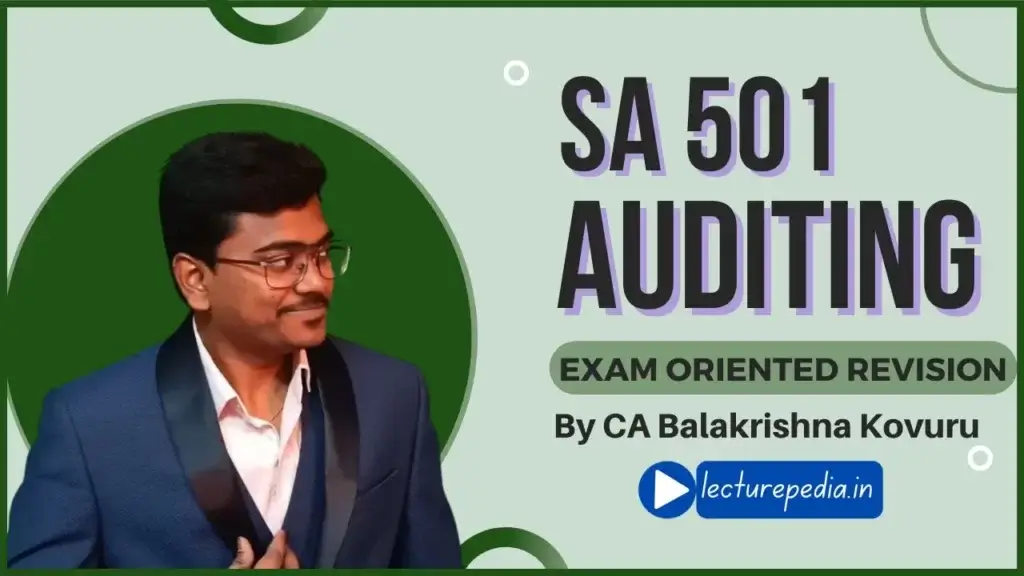Scope of SA-501
SA 501 deals with the objective of the auditor is to obtain sufficient appropriate audit evidence regarding the:
- Existence and condition of inventory;
- Completeness of litigation and claims involving the entity; and
- Presentation and disclosure of segment information in accordance with the applicable financial reporting framework.
Existence & Condition of Inventory
When inventory is material to the financial statements, the auditor shall obtain sufficient appropriate audit evidence regarding the existence and condition of inventory by:
- Attendance at physical inventory counting, unless impracticable, to:
- Evaluate management’s instructions and procedures for recording and controlling the results of the entity’s physical inventory counting;
- Observe the performance of management’s count procedures;
- Inspect the inventory; and
- Perform test counts; and
- Performing audit procedures over the entity’s final inventory records to determine whether they accurately reflect actual inventory count results.
Special cases regarding physical verification of Inventory
| Situation | Procedure |
| If physical inventory counting is conducted at a date other than the date of the financial statements | auditor shall, in addition to the procedures required by above, perform audit procedures to obtain audit evidence about whether changes in inventory between the count date and the date of the financial statements are properly recorded |
| If the auditor is unable to attend physical inventory counting due to unforeseen circumstances | auditor shall make or observe some physical counts on an alternative date, and perform audit procedures on intervening transactions |
| If attendance at physical inventory counting is impracticable | auditor shall perform alternative audit procedures to obtain sufficient appropriate audit evidence regarding the existence and condition of inventory. If it is not possible to do so, the auditor shall modify the opinion in the auditor’s report in accordance with SA 705 |
Inventory under the custody and control of a third party
When inventory under the custody and control of a third party is material to the financial statements, the auditor shall obtain sufficient appropriate audit evidence regarding the existence and condition of that inventory by performing one or both of the following:
- Request confirmation from the third party as to the quantities and condition of inventory held on behalf of the entity.
- Perform inspection or other audit procedures appropriate in the circumstances.
Litigation and Claims
- The auditor shall design and perform audit procedures in order to identify litigation and claims involving the entity which may give rise to a risk of material misstatement, including:
- Inquiry of management and, where applicable, others within the entity, including in-house legal counsel;
- Reviewing minutes of meetings of those charged with governance and correspondence between the entity and its external legal counsel; and
- Reviewing legal expense accounts.
- If the auditor assesses a risk of material misstatement regarding litigation or claims that have been identified, or when audit procedures performed indicate that other material litigation or claims may exist, the auditor shall, in addition to the procedures required by other SAs, seek direct communication with the entity’s external legal counsel
- If management refuses to give the auditor permission to communicate or meet with the entity’s external legal counsel, or the entity’s external legal counsel refuses to respond appropriately to the letter of inquiry, or is prohibited from responding; and
- the auditor is unable to obtain sufficient appropriate audit evidence by performing alternative audit procedures, the auditor shall modify the opinion in the auditor’s report in accordance with SA 705.
Segment Information
The auditor shall obtain sufficient appropriate audit evidence regarding the presentation and disclosure of segment information in accordance with the applicable financial reporting framework by:
- Obtaining an understanding of the methods used by management in determining segment information, and:
- Evaluating whether such methods are likely to result in disclosure in accordance with the applicable financial reporting framework; and
- Where appropriate, testing the application of such methods; and
- Performing analytical procedures or other audit procedures appropriate in the circumstances.
To get detailed understanding of the concept you can consider purchasing our Audit classes from here – https://lecturepedia.in/product/ca-final-audit-fastrack-classes-for-nov-2023-onward-exams-by-ca-balakrishna-kovuru/

